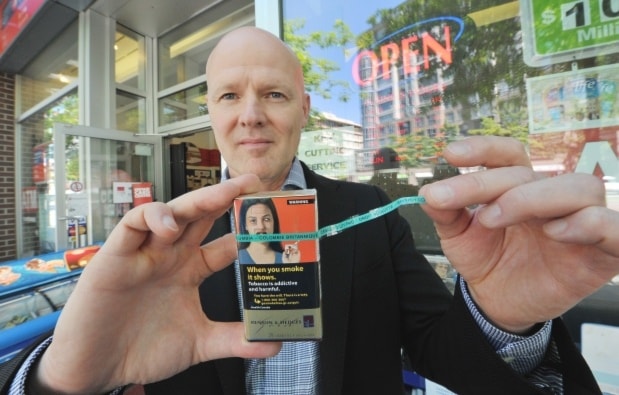BRITISH COLUMBIA — B.C. is getting smoked for tax losses of about $120 million per year because so many people use illegal tobacco.
An industry study, commissioned by the Western Convenience Store Association, said public safety is also an issue, because youth are disproportionately attracted to contraband smokes, which are about 50 per cent cheaper than legal cigarettes.
Association president Andrew Klukas said tax revenue estimates from government officials and study findings indicate that about $120 million in revenue is lost annually in B.C. because of contraband tobacco.
“The illegal cigarettes are sold without proper taxation ... the rock-bottom pricing is appealing to young people,†Klukas said.
“As retailers we do age testing and we do a good job, but contraband sellers are doing business out of the back of a truck, and they don’t check ages, so it is unfair and unsafe.â€
The study gathered discarded cigarette butts at 48 locations in B.C. this spring, and the materials were sent to a lab in Quebec to compare rates of legal and contraband tobacco in each geographic area.
Klukas said retailers suspected significant rates of contraband would be found. But the average of 17 per cent contraband discovered across sites tested in B.C. was surprising.
Previous association studies in Manitoba found 14 per cent contraband, and 10 per cent in Saskatchewan.
It had been expected the contraband rate would be lower here, because of B.C.’s greater distance from centres of illegal cigarette manufacturing in Ontario and Quebec. Experts believe contraband smuggled from Asia is possibly a more significant source of supply in B.C.
While a carton of legally taxed cigarettes will cost about $100, a contraband carton sells for $50. And amounts more affordable to youth are sold packaged in plastic bags, at $10 for about 200 cigarettes, Klukas said.
According to the study, contraband tobacco rates of 51.6 per cent were found at Simon Fraser University, 46.8 per cent at the University of B.C., 24.1 per cent at Tamanawis Secondary School in Surrey, and 23.5 per cent outside Prince Rupert city hall.
Guy Leroux, spokesman for a retailer group in Quebec, said illegal tobacco sales peaked in Ontario and Quebec in 2008.
He said Ontario was flooded with a stunning 50 per cent of contraband tobacco in 2008, and the rate was slightly lower in Quebec at 40 per cent.
Leroux said that through aggressive enforcement and “political will,†Quebec now has reduced its contraband rate to 13 per cent, while Ontario’s rate has dropped to about 20 per cent.
According to Leroux, organized crime finances cigarette manufacturing on some First Nations reserves in those provinces.
Experts say the pricing advantage enjoyed by contraband sellers makes the business appealing for organized crime groups.
Reducing the pricing advantage of illegal sellers by cutting the “sin tax†on tobacco isn’t seen as very likely for health reasons, so B.C. needs to put more resources into enforcement, Leroux believes.
RCMP Cpl. Dale Johnstone, who investigated contraband tobacco supply in B.C. with a border integrity unit, said it is difficult to know how much is coming from Asia and how much from within Canada.
In Johnstone’s experience, credible counterfeits of Canadian and international brands were discovered in containers in B.C. ports.
The fakes were believed to come from mainland China. Experts couldn’t tell the smokes were fake until manufacturers confirmed the shipments were not from their factories.
This all suggests, according to Johnstone and Klukas, that the level of contraband tobacco discovered in B.C. could be under-reported.
“You need dollars and commitment from the federal and provincial government to combat the illegal tobacco problem,†Johnstone said.
A spokesman from B.C.’s finance ministry said the government is aware of the new study and is taking steps to fight tobacco smuggling.
“We look forward to continuing our work with other federal and provincial jurisdictions as well as organizations like the Canadian and Western Convenience Stores Associations,†the spokesman said.
Read more stories by The Province.
